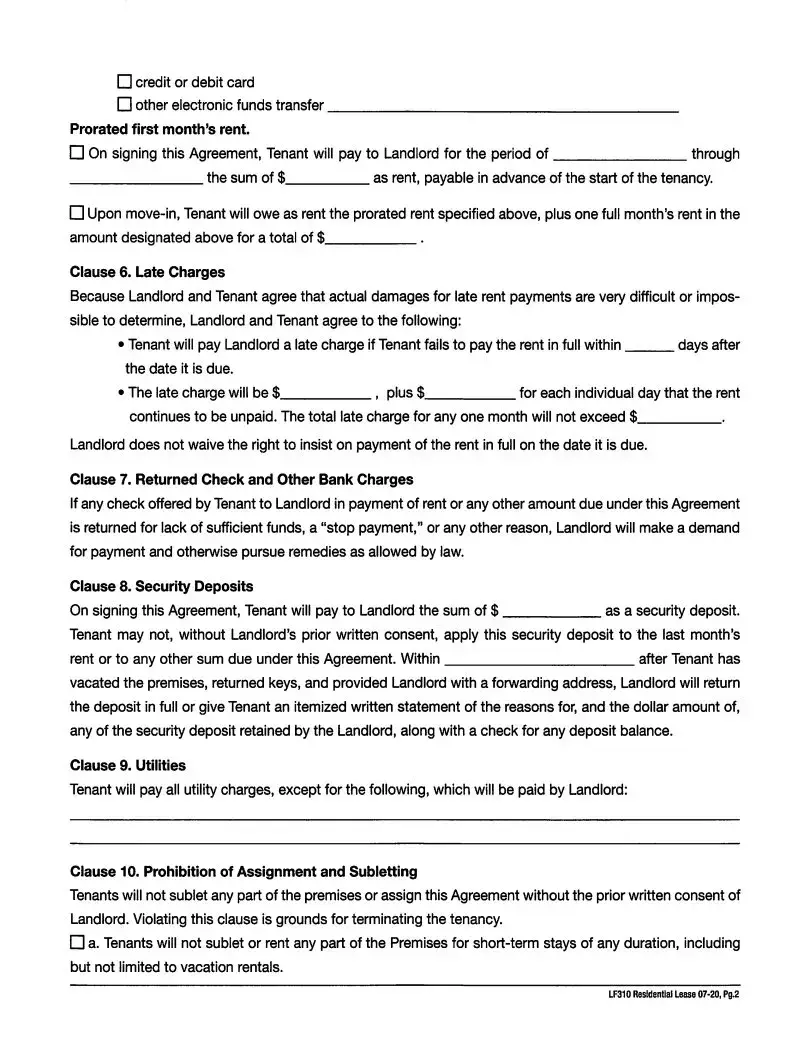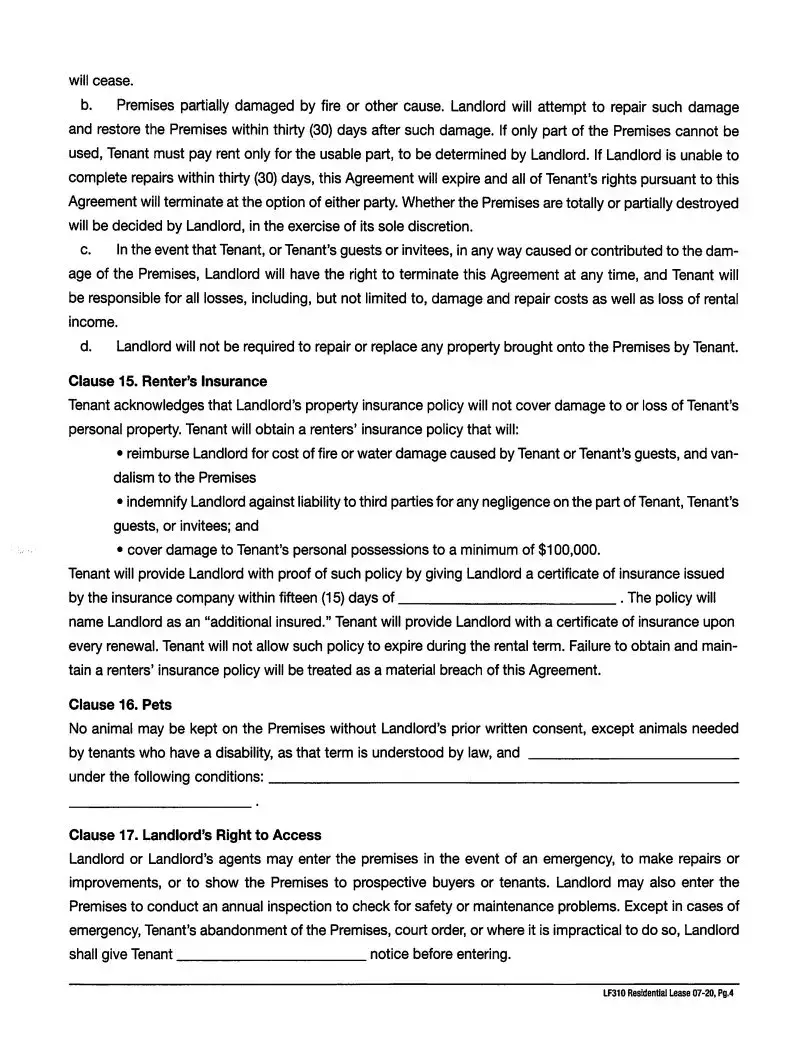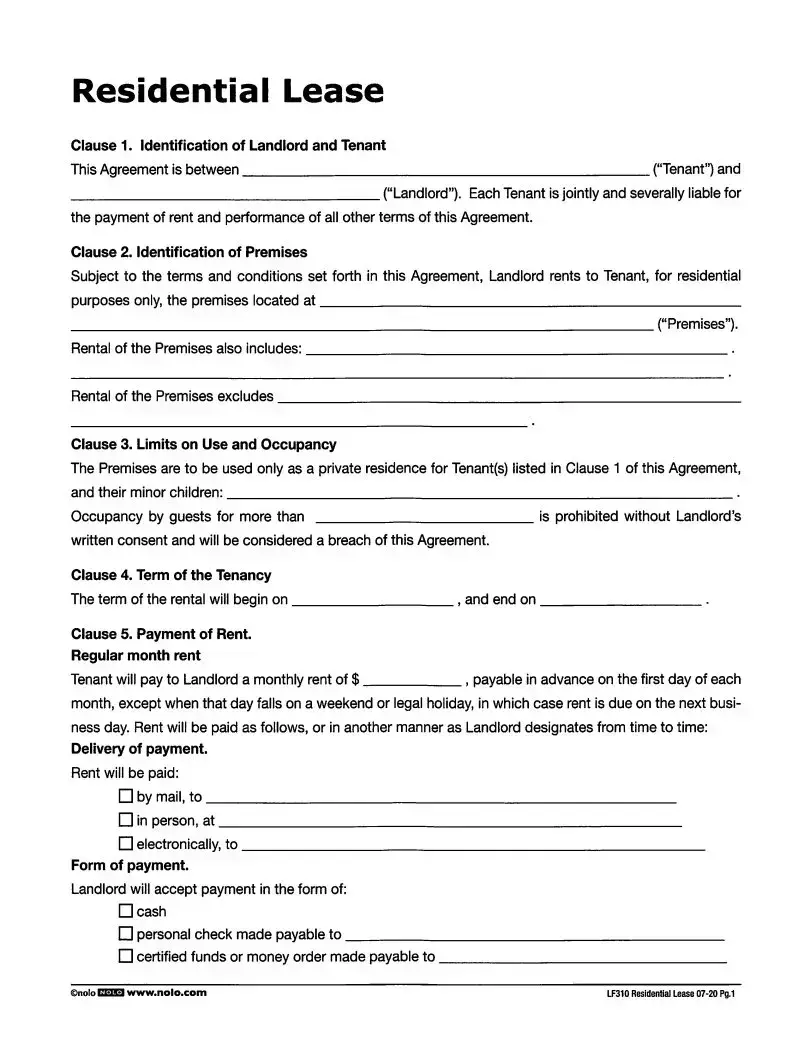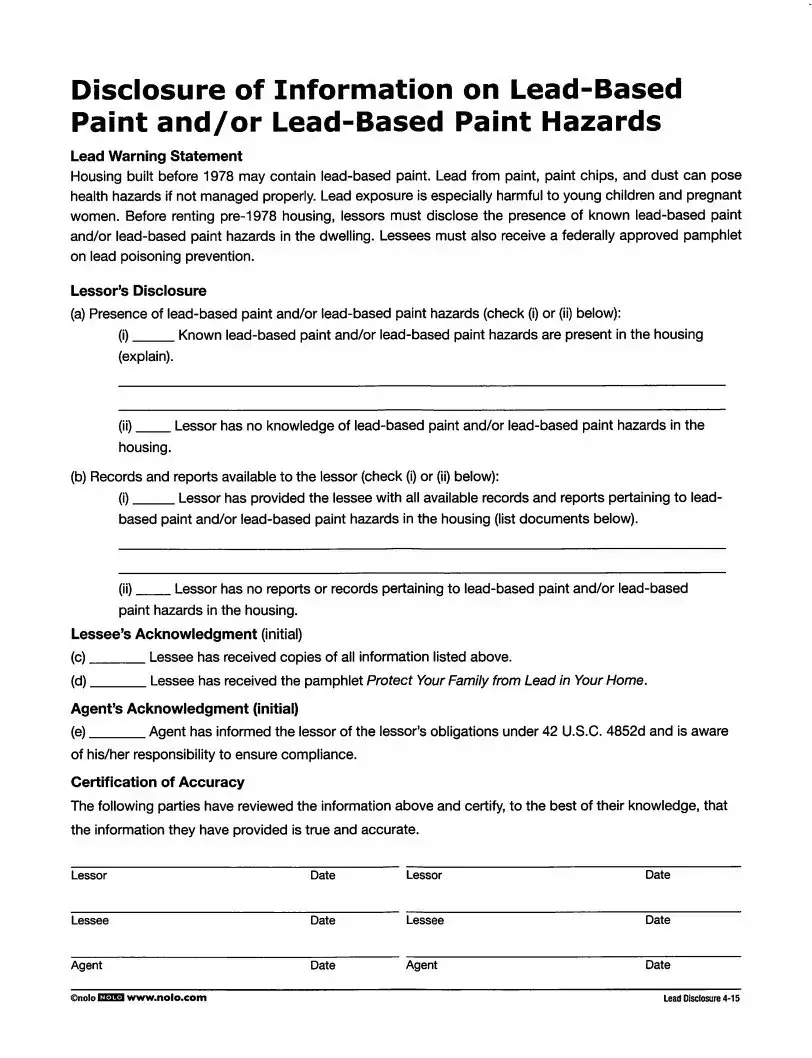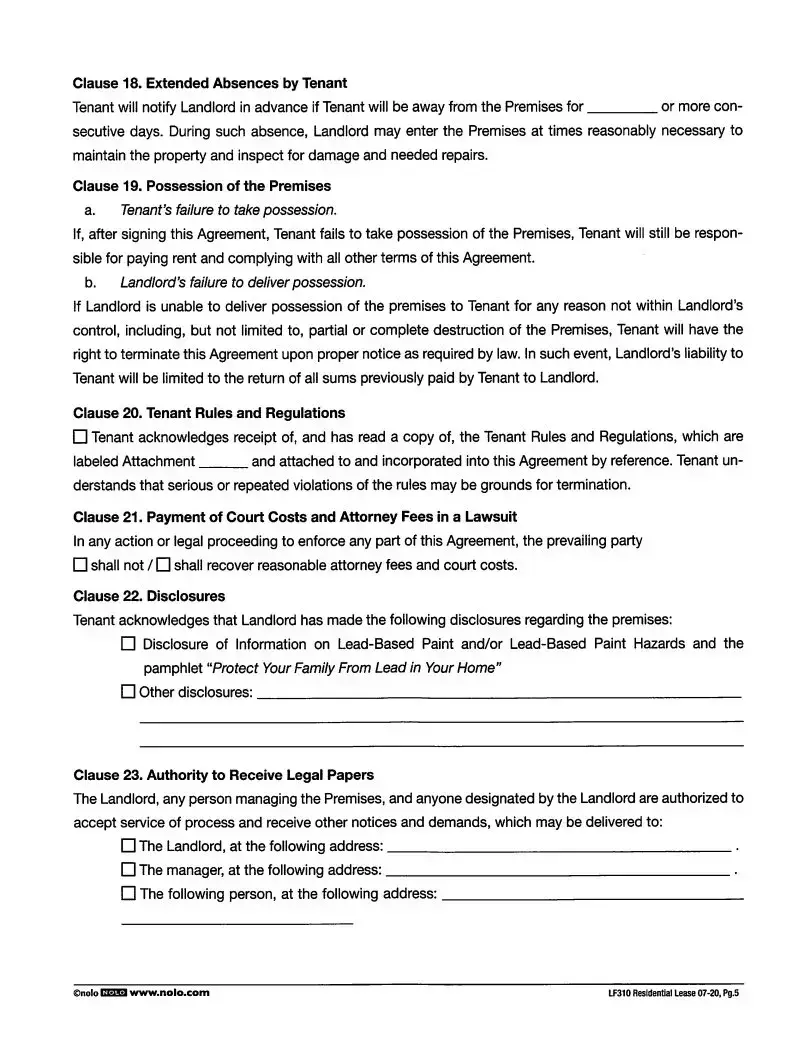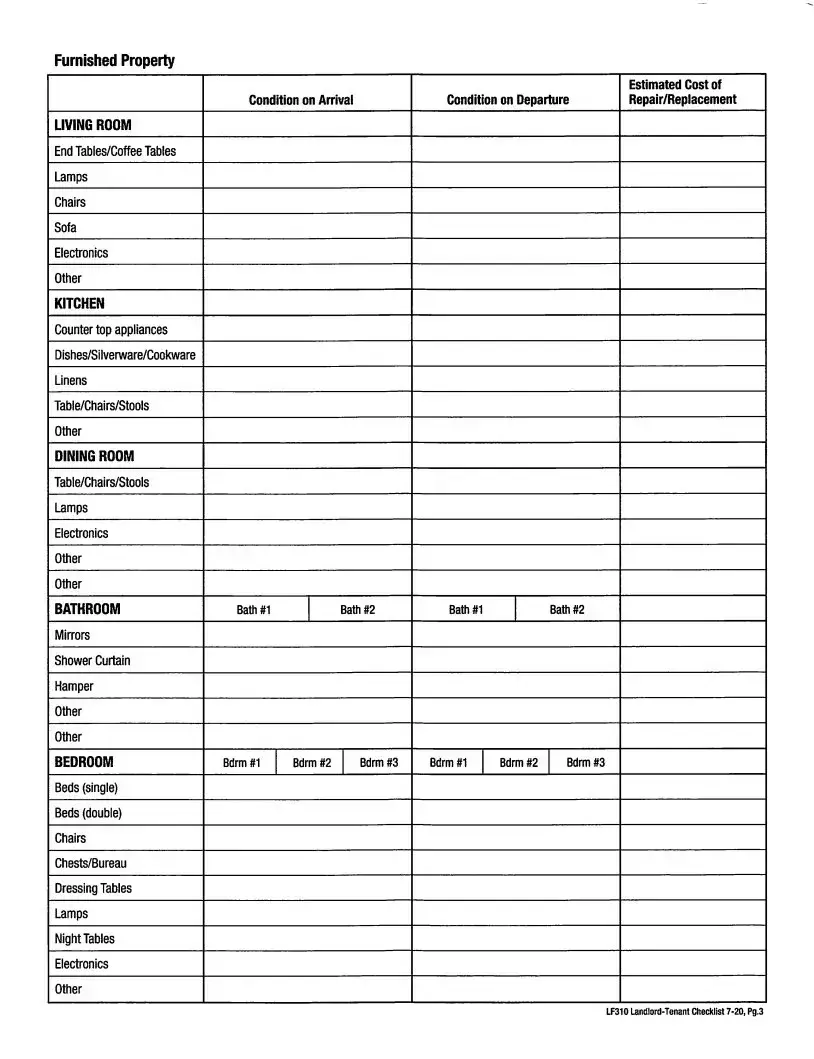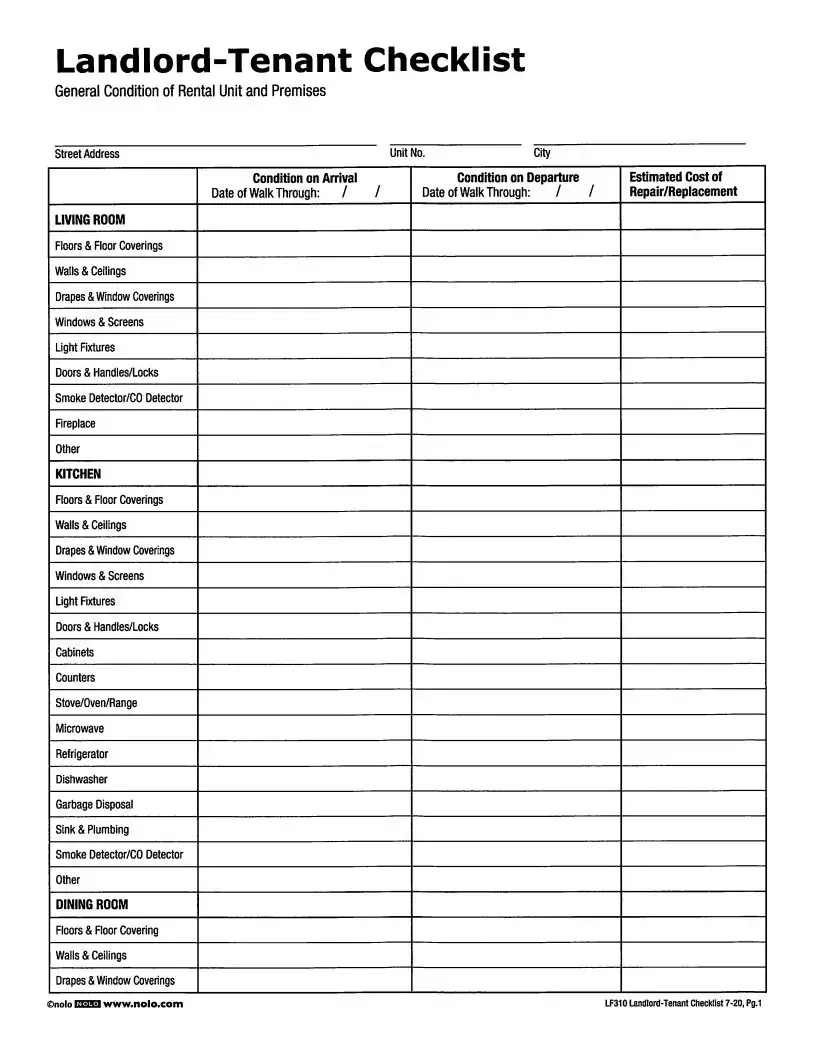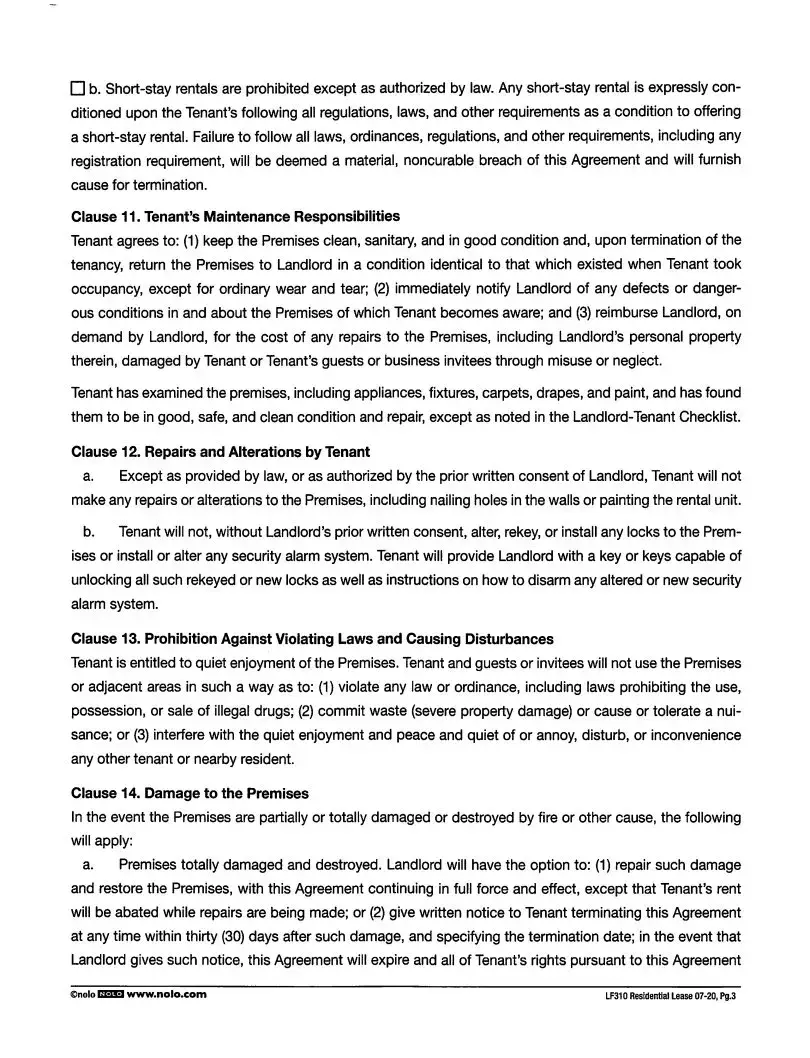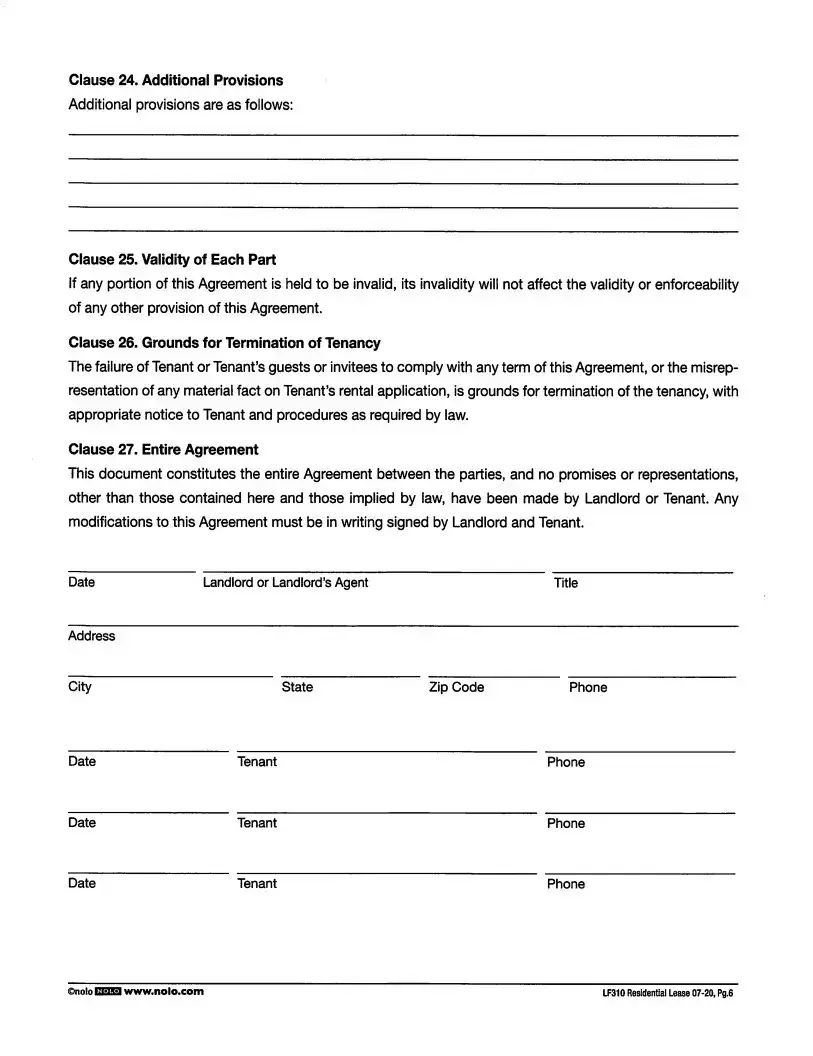The LF310 Residential Lease form is a comprehensive document that helps define the relationship between landlords and tenants. It begins with clear identification of both parties, establishing their mutual responsibilities, particularly in terms of rent payments and adherence to the lease terms. The lease specifies the residential premises being rented, outlining the intended use as a private residence exclusively for the tenant and their minor children. Important provisions regarding the duration of the tenancy are articulated, ensuring both parties understand when the lease begins and ends. Financial responsibilities are extensively detailed, such as the monthly rent amount, acceptable forms of payment, and provisions for prorated rent during move-in. The form includes stipulations regarding late charges and returned checks to address potential payment issues. Additionally, tenants must provide a security deposit, and the conditions for its return are clearly enumerated, including a timeline for the return of funds or an itemized statement of deductions. Finally, restrictions on subletting are firmly stated, emphasizing the importance of landlord approval for any alterations to occupancy. A solid understanding of these elements is crucial for both parties in maintaining a smooth rental experience.

